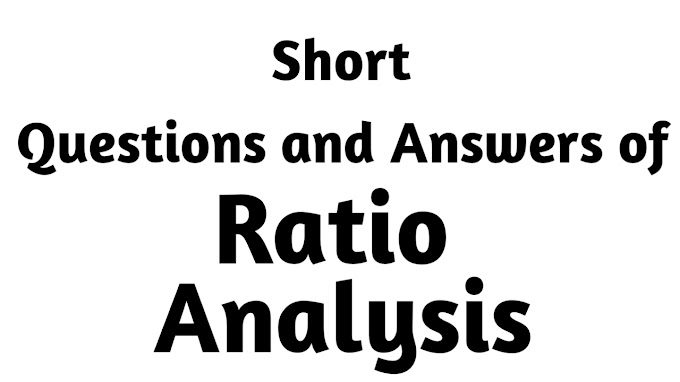Format of Cash Flow Statement of AS-3
AS-3
lays down a format for the cash flow statement which identifies separately the
main activities resulting in cash inflows and outflows. The standard requires
that tree separate categories of the cash flow should normally be show in the
cash flow statement.
These
are: 1. Operating Activities
2. Investing
Activities
3. Financing Activities
Operating Activities
Cash
flow operating activities are derived from the principle revenue-producing
activities of the enterprises.
The
example are:
(a)
Cash receipts from the sale of goods and the rendering of services;
(b)
Cash receipts from the royalties, fees, commissions and other revenue;
(c)
Cash payment to supplies for goods and services;
(d)
Cash payment to and on behalf of employees;
(e)
Cash receipts and cash payments of an insurance enterprise for premiums and claims,
annuities and other policy benefits;
(f)
Cash payments or refunds of income taxes unless they can be specifically identified
with financing and investing activities; and
(g)
Cash received and payments relating to future contracts, forwards contracts, are
held for dealing purposes.
Investing Activities
The
separate disclosure of cash flow arising from investing activities is important
because the cash flows represents the extent to which expenditures have been
made for resources intended to generate future income and cash flows.
Examples
of cash flows arising from investing activities are:
(a)
Cash payment to acquire fixed assets (including intangibles). These payments
include those relating to capitalised research and development cost and
self-constructed fixed assets;
(b)
Cash receipts from disposal of fixed assets (including intangibles):
(c)
Cash payment to acquires shares, warrants or debt instruments of other
enterprise and interest in joint ventures (other than payments for those
instruments considered to be cash equivalents and those held for dealing and
trading purposes);
(d)
Cash receipts from disposal of shares, warrants or debt instruments of other
enterprise and interest in joint ventures (other than receipts from those
instruments considered to be cash equivalents and those held for dealing and
trading purposes);
(e)
Cash advanced and loans made to third parties (other than advances and loan
made by a financial enterprise)
(f)
Cash receipts from the repayment of advances and loan made to third parties (other
than advances and loans of a financial enterprise);
(g)
Cash payments for futures contracts, forward contracts option contracts and
swap contracts except when the contracts are held for dealing or trading
purpose, or the payment are classified as financing activities and
(h)
Cash receipts from future contracts, forward contracts option contracts and
swap contracts except when the contracts are held for dealing or trading
purpose, or the receipts are classified as financing activities.
Financing Activities
The
separate disclosure of cash flow arising from financing activities is important
because it is useful in predicting claims on future cash flow by providers of
funds (both capital and borrowings) to the enterprise. Examples of cash flows
arising from financing activities are:
(a)
Cash proceeds from issuing shares or other similar instruments;
(b)
Cash proceeds from issuing debentures, loans, notes, bonds and other short and
long-term borrowings;
(c)
Cash repayments of amounts borrowed.
(d)
Payments of dividends
(e)
Payment of interest





















0 Comments